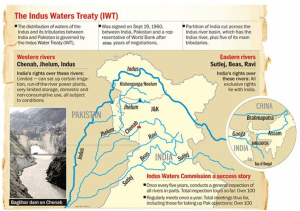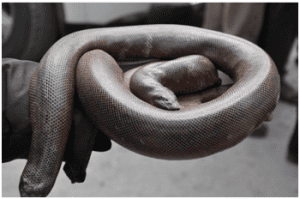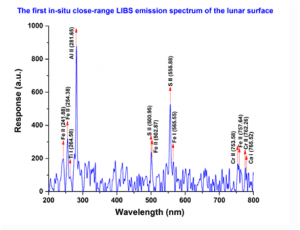1. THE PARDONING POWER OF PRESIDENT
TAG: GS 2: POLITY
THE CONTEXT: A death-row convict whose mercy petition has been disposed of by the president will have no right to appeal in a court against the decision when the new Bharatiya Nagarik Suraksha Sanhita Bill (BNSS), 2023 becomes law.
WHAT IS BHARATIYA NAGARIK SURAKSHA SANHITA (BNSS) BILL, 2023?
- 3 New Bills have been brought up by the parliament to repeal Indian Penal Code, 1860, Criminal Procedure Code, 1973 and Indian Evidence Act, 1872.
- The Code of Criminal Procedure (CrPC), 1973 will be replaced by the Bhartiya Nagarik Suraksha Sanhita Bill, 2023.
WHAT DOES BNSS BILL PROPOSES?
- Article 72 of the Constitution empowers the president to grant pardons, reprieves, respites or remissions of punishment or to suspend, remit or commute the sentence of anyone convicted of any offence.
- According to section 473, an addition to the BNSS Bill, no appeal shall lie in any court against the order of the president made under Article 72 of the constitution and it shall be final, and any question as to the arriving of the decision by the President shall not be enquired into in any court.
- Section 473 of the BNSS Bill also seeks to rule out delays on account of separate pleas filed by multiple death-row convicts in the same case. E.g., In the Nirbhaya case, the four convicts had filed their mercy pleas at separate times, forcing a delay until the last plea was rejected.
- It proposes that a jail superintendent shall ensure that every convict, in case there are more than one in a case, submits the mercy plea within 60 days.
- If no such petition is received from the other convicts, he shall himself send the names, addresses, copies of the case records and all other details to the Centre or the state government, along with the original mercy petition.
- However, no time-limit has been specified for the president for disposing of the mercy petitions.
- Section 473 of the BNSS Bill also seeks to give the Union 60 days’ time from the date of receipt of the state government’s comments on the pleas to send its recommendation to the president.
- Although there is no deadline for the president to decide on mercy petitions, the Union requests that the president’s decision be conveyed to the state home department and jail superintendent involved within 48 hours of the decision being made.
RULING OF SUPREME COURT:
- There have been several instances in the past where death row convicts approached the court at the eleventh hour, seeking a review of the president’s rejection of their mercy petitions.
- In Shatrughan Chauhan & Anr vs Union Of India , 1947 case, the Supreme Court has ruled in the past that the exercise of prerogative powers, such as clemency and pardons, by the president or the governor is justiciable and may be challenged on grounds like an “undue and unexplained” delay, solitary confinement etc.
- For e.g., 1991 Mumbai blasts convict Yakub Memon in 2015 and the four Nirbhaya case convicts in 2020.
2. THE INDUS WATERS TREATY (IWT)
TAG: GS 2: INTERNATIONAL RELATIONS
THE CONTEXT: Pakistan ‘unilaterally’ initiated arbitration at the Permanent Court of Arbitration (PCA) to address the interpretation and application of the Indus Waters Treaty (IWT) in Jan 2023. But today, India and Pakistan must recognise their common interest in the optimum development of the Indus rivers system.
INDUS WATER TREATY:

WHAT IS THE ISSUE OVER IWT?
- The Kishanganga and Rattle hydroelectric power projects in Jammu and Kashmir are at the centre of the current conflict between India and Pakistan.
- Pakistan has objected, citing treaty violations and potential harm to its water supply, which is against the terms contained in the treaty’s Annexure D.
- Pakistan first raised its concerns over the Kishanganga project in 2006 and the Rattle project on the Chenab in 2012. In 2010, the dispute on the Kishanganga project was taken to the Court of Arbitration (CoA).
- Pakistan contended that India’s plan is not in line with Article III, Article IV (6) and Paragraph 15(iii) of Annexure D of the IWT.
- In 2013, the CoA delivered the final judgment, ruling that the Kishanganga hydroelectric project is a run-of-river dam.
- India, under the IWT, can divert water from the river Kishanganga/Neelum for power generation.
- India has to maintain a minimum flow of water in the Kishanganga/Neelum river to nine cusecs (cubic metre of water per second).
- The two countries reached an amicable resolution on only one out of four issues that were expected to be resolved.
- In 2016, Pakistan requested the World Bank to form a CoA:
- India requested a neutral expert be appointed to deal with the dispute. At that time, the World Bank paused the works on the Kishanganga and Rattle projects “to allow the two countries to consider alternative ways to resolve their disagreements”.
STANCE OF INDIA:
- In 2023, the Permanent Court of Arbitration (PCA) unanimously rejected India’s objections and confirmed its competence to consider and resolve the disputes raised by Pakistan.
- The PCA, based on its interpretation of paragraph 1 of Annexure G and Article IX of, unanimously said that it is competent to “consider and determine the disputes set forth in Pakistan’s Request for Arbitration”.
- India said: It cannot be “compelled to recognize or participate in illegal and parallel proceedings not envisaged by the Treaty”.
- India has been participating in the neutral expert’s proceedings whose first meeting was held at The Hague on February 27-28.
WAY FORWARD:
- Revisiting the Indus Water Treaty will be helpful rather than the Court action. The need is to incorporate equitable and reasonable utilisation and the no harm rule in the IWT.
- It requires better ties and enduring trust between India and Pakistan.
- There is a remote chance that Pakistan will agree to India’s request to renegotiate to modify parts of the IWT’s clauses because of a wide trust gap between the two nations.
- There is a need to involve local stakeholders in any negotiation process between India and Pakistan on shared water issues.
- A Joint group comprising technocrats, climate experts, water management professionals, and scientists from both countries can be set up to look at the core of the problem.
3. THE GOODS AND SERVICES TAX
TAG: GS 3: ECONOMY
THE CONTEXT: India’s goods and services tax collections grew 11 per cent to Rs 1.60 lakh crore on an annual basis in August 2023.
EXPLANATION:
- The collection from Goods and Services Tax (GST) was Rs 1,43,612 crore in August 2022.
- in July 2023, the central and state governments collected ₹1.65 trillion in GST revenue, an improvement of 11 percent from the year-ago period.
- Among large state economies, Punjab, Haryana, Delhi, Uttar Pradesh, Maharashtra, Karnataka, and Tamil Nadu reported double-digit revenue growth.
- While Delhi witnessed a 25% annual improvement in GST revenue in July at ₹5405 crore.
- Uttar Pradesh had reported a 24 percent jump in revenue at ₹8802 crore.
- In June 2023, the gross GST revenue collected was ₹1,61,497 crore of which CGST was ₹31,013 crore, SGST was ₹38,292 crore, IGST was ₹80,292 crore and cess is ₹11,900 crore.
- GST collections have grown by more than nominal GDP, despite being no increase in tax rates.
- This is because of better compliance and improved tax collection efficiency. Tax evasion and avoidance is low.
- With the onset of festival season, the increased consumer spending for homes, cars, vacations, and other consumer items may also ensure higher monthly GST collections.
Goods and Services Tax (GST):
- It is an indirect tax (not directly paid by customers to the government) that came into effect on July 1, 2017, as a result of the 101st Amendment to the Indian Constitution.
- It is imposed on both manufacturers and sellers of goods, as well as suppliers of services.
- For tax collection, it is divided into five tax slabs – 0%, 5%, 12%, 18%, and 28%.
GST Council:
- It is an apex committee to modify, reconciles or make recommendations to the Union and the States on GST, like the goods and services that may be subjected or exempted from GST, model GST laws, etc.
- Article 279A of the Indian Constitution empowers the President of India to constitute a joint forum of the Centre and States called the GST Council.
4. Red Sand Boa
TAG: GS 3: Ecology and Environment
Context: A report by the Wildlife Conservation Society (WCS)-India has pointed out 172 incidents of seizures of red sand boa (Eryx johnii) between the years 2016-2021. The report, compiled by the Counter Wildlife Trafficking unit of WCS-India, and titled ‘Illegal Trade of Red Sand Boa in India 2016-2021 ‘ collates information from media reports on the seizures.
EXPLANATION:
Red Sand Boa:
- The red sand boa is a non-venomous snake found in Iran, Pakistan, and India. It is a primarily reddish-brown and thick-set snake that grows to an average length of 75 cm. Unlike most snakes, the tail is almost as thick as the body and gives the reptile the appearance of being “double-headed”.
- The red sand boa is found in dry, semi-desert scrub plains and rocky dry foothills. It is a burrowing snake that spends most of its time underground. It feeds on small mammals, lizards, and birds.
- The red sand boa is a popular pet snake in India. However, it is also a highly sought-after species in the illegal wildlife trade. The snake is believed to have medicinal and supernatural properties, and its price can be very high.
- The red sand boa is listed as a vulnerable species by the International Union for Conservation of Nature (IUCN). The main threats to the snake are habitat loss and illegal trade.
- The scientific name of the red sand boa, Eryx johnii, is in honor of the English naturalist John John Smith.
- The red sand boa is the largest of the sand boas in the world.
- The red sand boa is listed as a vulnerable species by the IUCN.

5. THE LASER-INDUCED BREAKDOWN SPECTROSCOPY (LIBS)
TAG: GS 3: SCIENCE AND TECHNOLOGY
THE CONTEXT: The Laser-Induced Breakdown Spectroscopy (LIBS) instrument onboard Chandrayaan-3 Rover has made the first-ever in-situ measurements on the elemental composition of the lunar surface near the south pole. These in-situ measurements confirm the presence of Sulphur in the region unambiguously, something that was not feasible by the instruments onboard the orbiters.
EXPLANATION:
Laser-induced breakdown spectroscopy (LIBS):
Laser-induced breakdown spectroscopy (LIBS) is a rapid, non-destructive analytical technique that uses a laser to ablate a small amount of material from the surface of a sample and then analyzes the light emitted from the resulting plasma. The light emitted from the plasma contains information about the elemental composition of the sample.
- LIBS is a scientific technique that analyzes the composition of materials by exposing them to intense laser pulses.
- It a high-energy laser pulse is focused onto the surface of a material, such as a rock or soil.
- The laser pulse generates an extremely hot and localized plasma.
- The collected plasma light is spectrally resolved and detected by detectors such as Charge Coupled Devices.
- Preliminary analyses, graphically represented, have unveiled the presence of Aluminum (Al), Sulphur (S), Calcium (Ca), Iron (Fe), Chromium (Cr), and Titanium (Ti) on the lunar surface.
- That measurement has revealed the presence of manganese (Mn), silicon (Si), and oxygen (O). Thorough investigation regarding the presence of Hydrogen is underway.
- LIBS payload is developed at the Laboratory for Electro-Optics Systems (LEOS)/ISRO, Bengaluru.

THE MAIN COMPONENTS OF A LIBS SYSTEM ARE:
- A laser: The laser is used to ablate the sample material. The most common lasers used for LIBS are Nd:YAG lasers, which operate at a wavelength of 1064 nm.
- A spectrometer: The spectrometer is used to collect and analyze the light emitted from the plasma.
- A detection system: The detection system is used to convert the light signal into an electrical signal that can be processed by a computer.
LIBS can be used to analyze a wide variety of materials, including metals, minerals, rocks, and biological materials. It is a versatile technique that can be used for a variety of applications, including:
- Quality control: LIBS can be used to quickly and easily analyze the elemental composition of materials for quality control purposes.
- Forensic analysis: LIBS can be used to identify materials and trace the origin of materials.
- Environmental monitoring: LIBS can be used to measure the elemental composition of air, water, and soil for environmental monitoring purposes.
- Cultural heritage: LIBS can be used to analyze archaeological and cultural heritage objects to learn more about their composition and history.
The advantages of LIBS:
- It is a non-destructive technique, meaning that the sample is not damaged during analysis.
- It is a rapid technique, with analysis times typically taking a few seconds.
- It is a versatile technique, capable of analyzing a wide variety of materials.
- It is a sensitive technique, capable of detecting even trace amounts of elements.
Limitations of LIBS:
- It can be difficult to obtain accurate results for samples with high concentrations of refractory elements.
- The results can be affected by the surface condition of the sample.
- The technique can be affected by atmospheric conditions.

